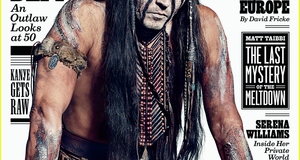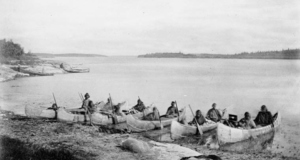Featured Article:Controversial Kin: Transracial Adoption in "Hope Leslie" and "Ramona"
By
2013, Vol. 5 No. 10 | pg. 1/4 | » AbstractCritics often ignore transracial adoption as a literary theme in both Catharine Sedgwick’s Hope Leslie; Or, Early Times in Massachusetts (1827) and Helen Hunt Jackson’s Ramona, A Story (1884), as these two texts’ portrayals of the occurrence are often complicated and particularly ambiguous. Yet, understanding these two authors’ depictions of same-race and transracial adoptions is crucial to realizing they were imagining a new ethical paradigm for contact between whites and Native Americans — that of cross-racial care instead of cross-racial violence. This paper argues that Hope Leslie’s portrayal of transracial adoptions significantly paved the way for Helen Hunt Jackson’s Ramona to discuss Native American personhood and transracial inclusion in the nation. In Ramona, Jackson examines transracial adoption in order to criticize how the government had treated Native Americans under their “care” in the 1830 and 1840s. If the U.S. were to ever become a racially integrated nation, Ramona posits the American government would be better off incorporating elements of Native American adoption practices into the naturalization process, as opposed to removal policies or complete assimilation. The practice of adoption often alters a society’s view on the nature of family, and the practice of transracial adoption even more so, as it brings into question whether parents and children of two different races can truly share familial bonds. For Catharine Maria Sedgwick (1789-1867) and Helen Hunt Jackson (1830-1885), two American novelists of the nineteenth century, transracial adoption, especially between whites and Native Americans, was a subject of great interest because it inverted the expectation that whites and Native American could not possibly co-exist. Although their portrayals of Native Americans were often stereotypical, as was common for the time, Sedgwick’s Hope Leslie (1827) and Jackson’s Ramona (1884) stand out as two novels of the nineteenth century that imaginatively invited Native Americans into the home, the sphere typically reserved for middle- or upper-class white women and their developing families. Hope Leslie; Or, Early Times in Massachusetts (1827), portrays same-race adoptions alongside transracial “captive” adoptions to highlight the occurrence of cross-cultural care. And though not a direct cry for whites to stop their mistreatment of Native Americans, the text’s discussion of transracial adoption is a major conduit for Sedgwick to express her desire for egalitarianism and racial/gender tolerance in the nation. After reading Hope Leslie, many of Sedgwick’s literary contemporaries were motivated to generate “a host of antiremoval petitions to Congress,” as Hope Leslie made the claim that caring women’s for the well-being of the “Other” was simply an extension of a woman’s duty as moral compass and caretaker of the home (Strand, 2009, p. 43).Helen Hunt Jackson (top) and Catharine Sedgwick (bottom).   Because of the groundwork Sedgwick and other early politically minded female authors set down, Jackson was able to advocate for Native Americans with less fear of public reprisal and less stigma encompassing her political speech—though that is not to say Ramona’s reception was completely without censure. Jackson aimed her novel’s criticisms at U.S. policy makers and the American public for the explicit purpose of reforming unethical policies concerning Native Americans; 57 years after Hope Leslie’s publication, Ramona was poised to attack a very specific moral ill, instead of just a general sense of injustice against the unprivileged of society, as Sedgwick’s text had done. In order to achieve its rhetorical goal, Hope Leslie looked backward at white America’s “origins,” i.e. colonial times in Massachusetts, as a way to suggest that racial and gender tolerance was an integral part of the unique American spirit, and had been since the very beginning of the nation. Similarly, Ramona looked back in time, but again the text focuses in on a time in American history that very specifically affected the fate of Native Americans in America. Ramona’s timeline runs from the 1830s through the 1840s, the period of time when the U.S. government was formulating and enacting Indian Removal policies. And by setting the main conflict novel in the late 1840s, Jackson places the birth of the teenage Ramona somewhere in the 1830s—the time in America’s history that Jackson most wanted to criticize. The fact that these texts discussed transracial adoption around the same time the U.S. government was grappling with the Indian question and Indian removal policies was no coincidence. Although outwardly these policies were just a way for the government to remove Indians off fertile land for white settlers, the ethics of this removal demanded the nation contemplate whether or not Native Americans were actually “people,” so to speak. When Indian Removal policies were enacted in the 1830s and 1840s, it was an acceptable act precisely because the nation had decided—whether explicitly or implicitly—that Native Americans were not “people” with equal legal and social statuses to whites. Without this status, Native Americans could be just as easily removed or killed as any animal. As Jackson (1881) wrote in her non-fiction text, A Century of Dishonor, “An Indian has no legal status. He is merely a live and particularly troublesome animal, in the eye of the law” (p. 367). However, Sedgwick (writing shortly before Indian Removal policies were enacted) and Jackson (writing post-removal) very much question the legitimacy of this kind of thinking. Hope Leslie and Ramona debate the notion that Native Americans were inhuman by imaginatively exploring the transformative power of adoption and what connections the practice had with personhood and American citizenship. In the domestic sphere, adoptions were able to transform non-related children into members of the family. On a national scale, incorporating aspects of the Native American’s inclusive adoption practices into the naturalization process might be able to grant Native Americans a new status as well, taking them from “foreign animal” to “human” and then even to “American citizen.” That is not to say Sedgwick and Jackson were completely open about their aims, however. Because of the controversial nature of these authors’ progressive rhetoric in a time when the nation was mired in racial politics and oppression, Hope Leslie and Ramona’s portrayals of transracial adoption are mostly ambivalent, often ambiguous and usually problematic. Ultimately, however, Hope Leslie’s portrayal of cross-racial care within transracial adoptions and its comparison of white and Native American adoption practices paved the way for Ramona to discuss personhood and racial inclusion in the nation. In Ramona, Jackson examines transracial and same race-adoption in order to criticize how the government had treated Native Americans under their “care”; if the U.S. were to become a racially integrated nation, Ramona posits that America would be better off imitating Native American adoption practices.Continued on Next Page » Suggested Reading from Inquiries Journal
Inquiries Journal provides undergraduate and graduate students around the world a platform for the wide dissemination of academic work over a range of core disciplines. Representing the work of students from hundreds of institutions around the globe, Inquiries Journal's large database of academic articles is completely free. Learn more | Blog | Submit Latest in Literature |
















